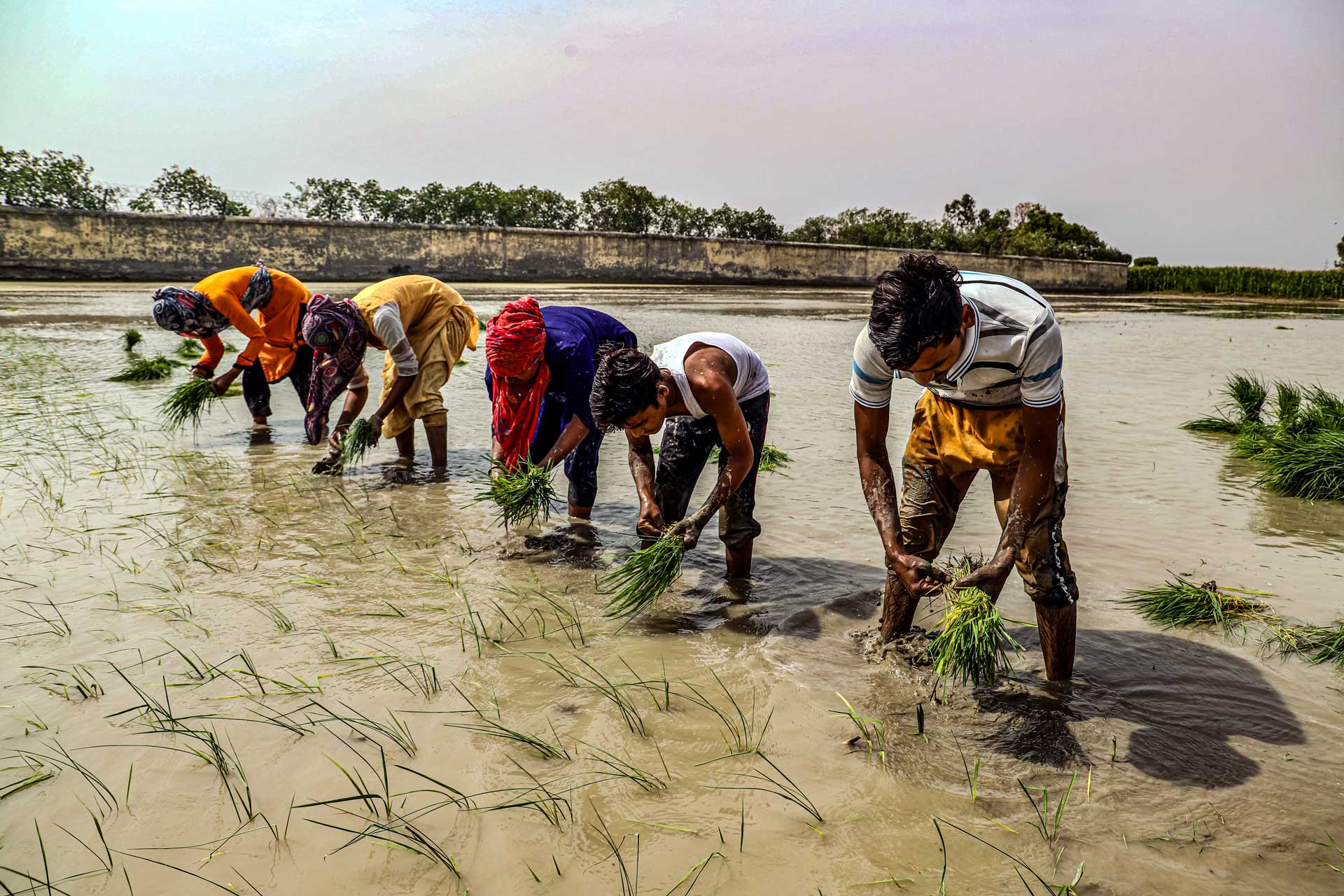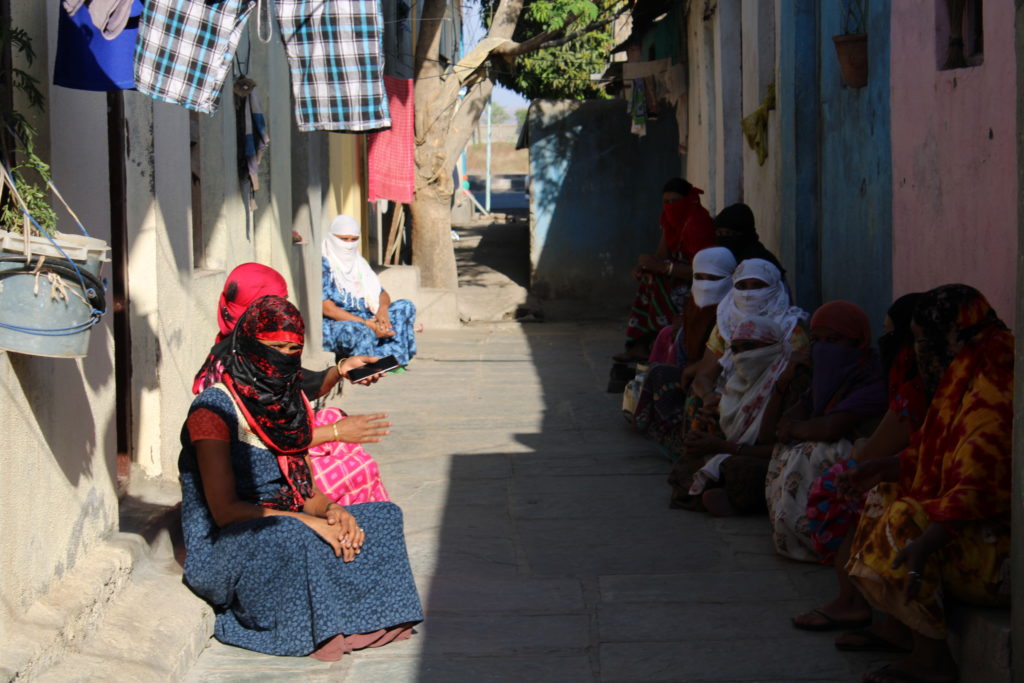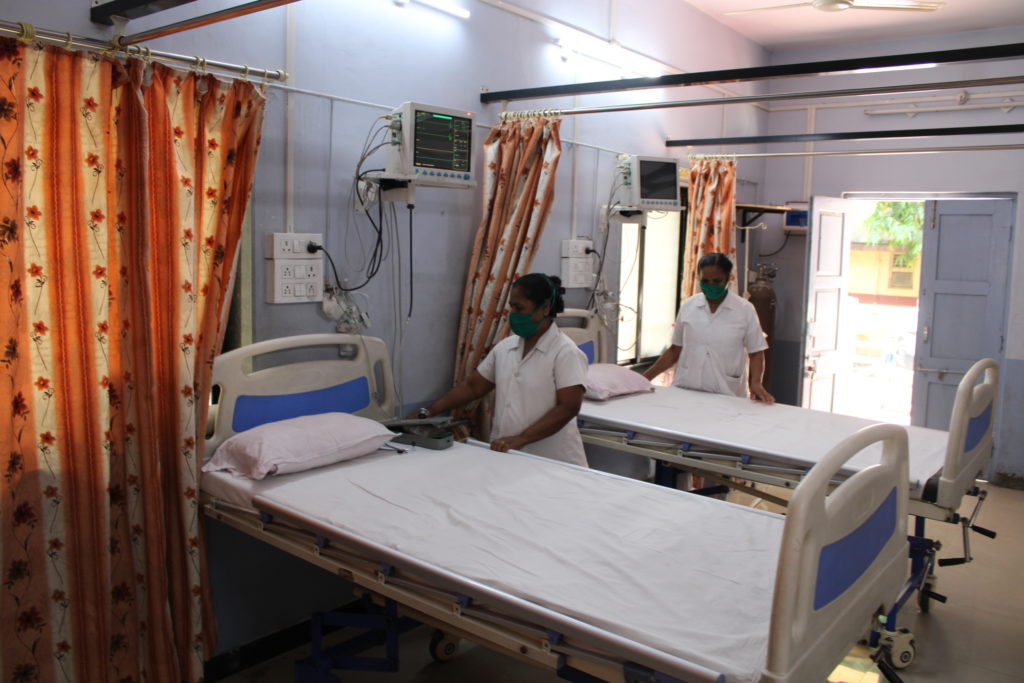International Equal Pay Day: COVID-19 pushes Indian women from low pay to no pay

A vast majority of women in India are employed in informal sectors of economy like agriculture (MIG Photos/Aman Kanojia)
A mid-career tourism professional with over 10 years of experience behind her, Sharda Wagh was working in a leading travel firm in Mumbai in the Domestic FIT operations wing and was content with her career and life. All was fine until the COVID-19 pandemic hit India and the government announced a hasty nationwide lockdown, the world’s most stringent and long-lasting, on March 25.
‘‘When the lockdown was announced, our offices, like any other company, were closed down in a hurry, but we were asked to work from home and even though the lockdown was partially lifted at the end of May, we were told to continue to work from home for the time,’’ Wagh tells Media India Group.
Right from the time that the lockdown was announced, Wagh tried to balance the demands of a full time work with the domestic chores that awaited her in a seven member household and a new born infant in her arms. ‘‘Ultimately, it was all on my mother-in-law and myself to take care of all the work at home, which had increased tremendously as our maids could not come. So, I had to get up at 5 am every day in order to finish the housework before my office began so I could join in the work from home. And in between all this, I had to find time for my baby. It was strenuous,’’ says Wagh.
What added to the strain was the fact that her company had stopped paying her, citing a complete shutdown of business. ‘‘But we were told to continue to work from home and that we did because we wanted to be with the company in this troubled period, but also because we were hoping that the company would do something for its employees, even pay part salary. But they did not,’’ Wagh adds.
Suddenly in August, her company bosses called her and told her to either send in her resignation with immediate effect or face the stain of termination which could affect her future job prospects. ‘‘I had no choice but to resign. But I am very upset about the way my company has treated me. For so many years, I gave my days and nights to them. Practically every day I and my colleagues had to stay back at the office for several hours – without getting any additional payment for that. So, the company should have been more considerate towards us,’’ says Wagh.
Tourism along with aviation is amongst the worst-hit sectors of the economy. According to travel companies’ associations in India, the sector is looking at a loss of INR 10 trillion with 38 million jobs lost.
A World Trade Organisation report says that the sectors that have been hit hard by the pandemic include hospitality, retail, healthcare and events are the ones which tend to have many more female employees than male.
The impact of the pandemic has been even more harsh in the informal sectors of India where again women outnumber men. International Labour Organisation says that there are anywhere up to 80 million persons employed as domestic help, a vast majority of them women. Most of them have found themselves without any income since the lockdown began.
“Life has taken a complete turn after the pandemic. I used to work in three houses and used to make around INR 5,000 monthly. It was helpful. However, as soon as the lockdown started, I had no work. The houses that I used to work in supported me for a while. But now it’s not possible for them too. One of the houses that I work in has two elderly people. They cannot manage on their own and the society is not allowing house maids to enter. I live with my three kids. I can’t even pay for their education now,” says Seema who works as a domestic help in Kolkata.

Women in vulnerable positions, like these commercial sex workers in Ahmednagar in Maharashtra, have been particularly impacted by the pandemic (MIG Photos/Varsha Singh)
About 1500 km away in Ahmednagar in Maharashtra, Shilpa, who has been working there as a sex worker for over a decade has also been reduced to penury by the pandemic. She says that over the past decade, she had earned enough money to not only sustain herself and her family, back in her village, but also educate her son. But the pandemic has brought her to the edge of desperation. “I have a son and my parents who live in Kolkata. Before the lockdown, I used to send them INR 5,000 every month but that has now stopped. Due to the lockdown we have zero income. Let alone being able to send any money home, I and my fellow workers here have been surviving only on whatever food some charities bring to us. We don’t know how we are supposed to manage in the long run. I stay here in a rented room. The owner has not yet asked for rent but we don’t know what to give when she asks,” she tells Media India Group.
The disruption of sectors which mainly employ women is bound to severely impact the position of Indian women at workplace. Already, the country had fared disastrously in this matter as it figured 149th in the list of 153 nations globally in terms of economic gender gap as per the Global Gender Gap 2020 released earlier this year by the World Economic Forum. Only four countries in the world, three of them war torn – Syria, Iraq and Yemen – as well as Pakistan trailed India in the list. India’s ranking had slipped seven places from last year. Even in terms of women’s participation in the labour market, India ranks a poor 145th in the world as less than 25 pc of women, compared with 82 pc of men, engage actively in the labour market — working or looking for work.
Starting with such a low base of participation, even the few women who do make it to the formal sector find several hurdles in earning as much as their male counterparts. A survey by government of India says that for the same job role in a company, a woman is likely to earn 35 pc lesser wage than her male counterpart. Overall, the total earned income is less than a fifth of total male income, putting India again at the bottom of the pile of nations at 144th.
Even for women who get into active work, the hurdles remain far too many. First is the household work. Here again, India’s performance is amongst the worst in the world as almost the entire burden is left on women. According to NITI Aayog, a government think tank, in 2017, women did 9.8 times more household work than men. Also, the societal and familial pressures mean that for taking care of an ailing family member, a woman has to stay back, leading to more frequent absence from work than for the males.
Another major handicap for women in India is the pressure to get married fairly early, with the average age of women at marriage being 19.3 pc in metropolitan areas, while overall 60 pc of women get married before they even attain the legal age of 18 years. And in many cases, women give up work after marriage either because they relocate to their husbands’ homes or because of familial pressures and sometimes even of their own volition.

Healthcare is one of the few formal sectors which mainly employ women (MIG Photos/Varsha Singh)
Women’s role at workplace has also been severely disrupted by pregnancy which happens within the first two years of marriage in an overwhelming number of cases. All these burdens make women in India more vulnerable to suffer at workplace in terms of pay and position than their counterparts in most other nations and not just the developed countries.
The government has been trying to bring some parity at workplace by mandating equal work equal pay policy as well as through progressive measures such as increasing maternity leave, starting paternity leave to allow men to participate in childcare. Many of the government offices now boast of creches to take care of children and hence allow women to return to work sooner.
Thus, it is no surprise that India ranks a lowly 136th in terms of women in leadership positions, with only 14 pc of leaders – at workplace – being women. In terms of number of women CEOs in companies, India ranks third from bottom in the Asia Pacific region, with only 2 pc of CEOs being women and just 1 pc being Chief Financial Officers. The country, however, does fare much better in terms of female representation in management boards of companies. The number rose to 15.2 pc in 2019 an increase of 4.3 pc since 2014.
While the government may have made some right moves, women at workplace have often been let down by their own employers who end up paying lip service to the progressive and modern targets, while discriminating flagrantly in favour of males in terms of wages, responsibility as well as growth prospects. It does not help that an overwhelming number of women are employed in sectors or companies that do not follow the labour regulations guaranteeing protection of workers’ rights.
Since the outbreak of the pandemic, the Indian economy has reported the worst performance among large economies of the world, recording a drop of over 25.6 pc in GDP in Apr-June quarter. With the pandemic still picking up pace and continuing to grow uncontrollably in India, the economic malaise is bound to become even more severe. It will be months after the pandemic has been curbed that the reality will emerge on exactly how badly the pandemic worsened the situation of women at workplace in India. But it is certain that the dream of Equal Pay for Indian women has become an even more remote possibility than what it was at the beginning of 2020.









